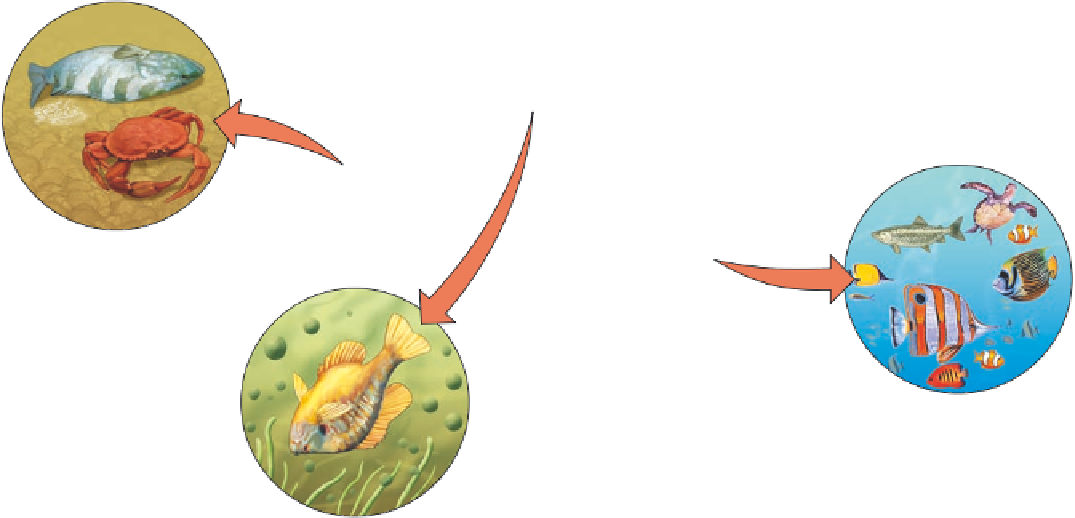Environmental Engineering Reference
In-Depth Information
The oceans can dilute, disperse, and degrade large
amounts of raw sewage, sewage sludge, oil, and some
types of degradable industrial waste, especially in
deep-water areas. Also, some forms of marine life have
been affected less by several pollutants than expected.
Some scientists have suggested that it is safer to
dump sewage sludge and most other harmful wastes
into the deep ocean than to bury them on land or
burn them in incinerators. Other scientists disagree,
pointing out we know less about the deep ocean than
we do about the moon. They add that dumping
harmful wastes in the ocean would delay urgently
needed
Science: Pollution of Coastal Waters
Pollution of coastal waters near heavily populated
areas is a serious problem.
Coastal areas—especially wetlands and estuaries,
coral reefs, and mangrove swamps—bear the brunt of
our enormous inputs of wastes into the ocean (Fig-
ure 11-28). This is not surprising because 45% of the
world's population lives on or near the coast and 14 of
the world's 15 largest metropolitan areas (each with
10 million people or more) are near coastal waters (see
Figure 7-13, p. 141, and Figure 7-15, p. 142).
In most coastal developing countries and in some
coastal developed countries, municipal sewage and in-
dustrial wastes are dumped into the sea without treat-
pollution
prevention
and
promote
further
degradation
of
this
vital
part
of
the
earth's
life-
support system.
Industry
Nitrogen oxides
from autos and
smokestacks,
toxic chemicals,
and heavy metals
in effluents flow into
bays and estuaries.
Cities
Toxic metals and
oil from streets and
parking lots pollute
waters; sewage
adds nitrogen and
phosphorus.
Urban sprawl
Bacteria and viruses from
sewers and septic tanks
contaminate shellfish beds
and close beaches; runoff of
fertilizer from lawns adds
nitrogen and phosphorus.
Construction sites
Sediments are washed into
waterways, choking fish and plants,
clouding waters, and blocking sunlight.
Farms
Runoff of pesticides, manure, and
fertilizers adds toxins and excess
nitrogen and phosphorus.
Red tides
Excess nitrogen causes
explosive growth of toxic
microscopic algae,
poisoning fish and
marine mammals.
Closed
shellfish beds
Closed
beach
Oxygen-depleted
zone
Toxic sediments
Chemicals and toxic metals
contaminate shellfish beds,
kill spawning fish, and
accumulate in the tissues
of bottom feeders.
Oxygen-depleted zone
Sedimentation and algae
overgrowth reduce sunlight,
kill beneficial sea grasses, use
up oxygen, and degrade habitat.
Healthy zone
Clear, oxygen-rich
waters promote growth
of plankton and sea grasses,
and support fish.
Figure 11-28
Natural capital degradation:
residential areas, factories, and farms all contribute to the
pollution of coastal waters and bays.








